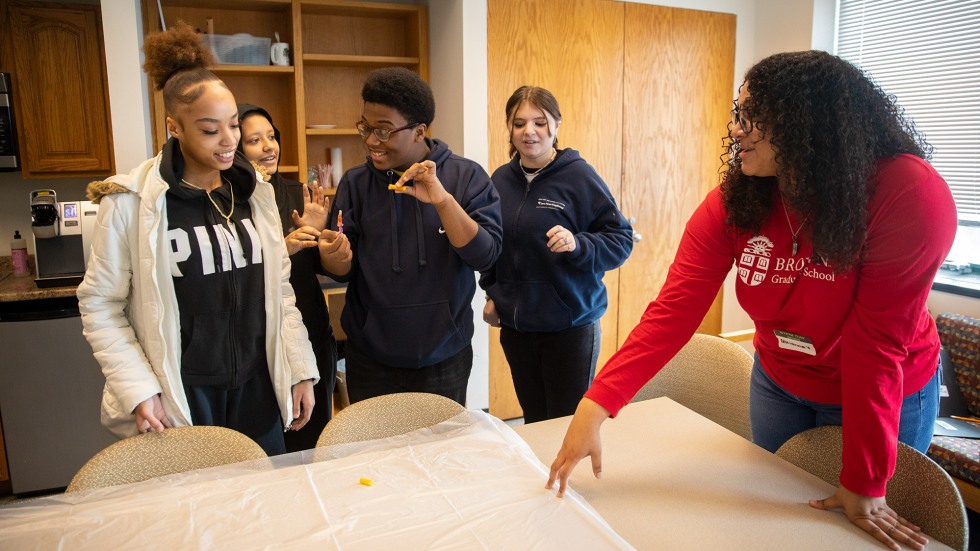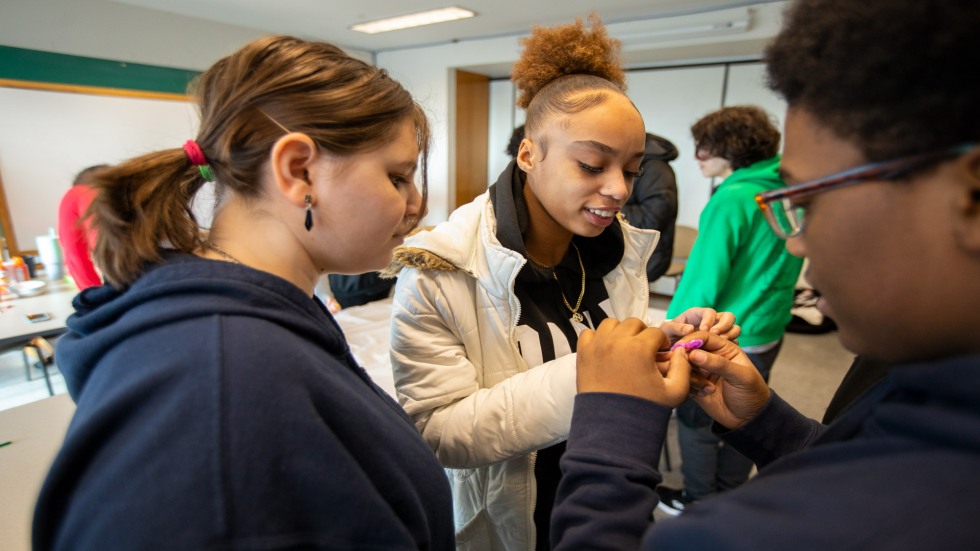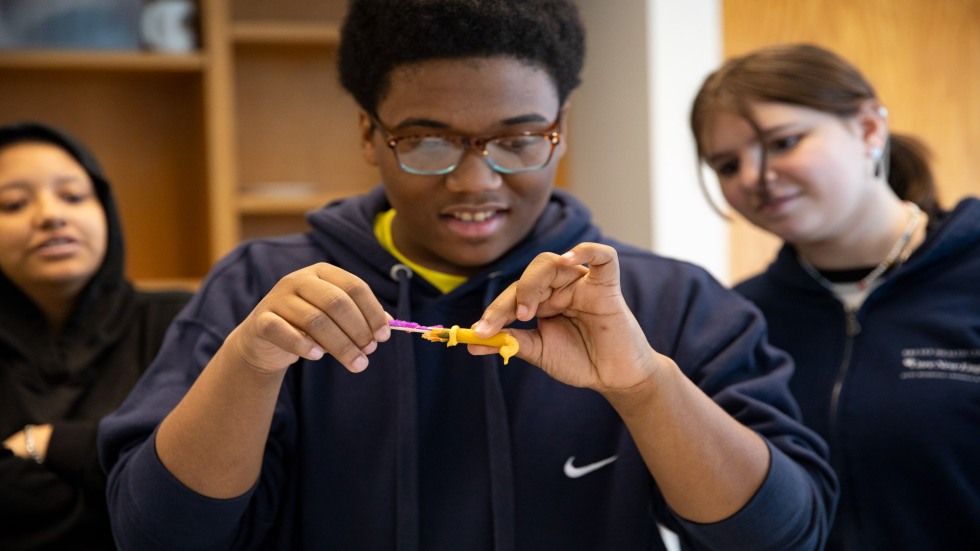PROVIDENCE, R.I. [Brown University] — Early on a Tuesday morning in a third-floor laboratory in Brown University’s geochemistry building, small groups of Providence-area high school students were met with an odd set of tools to solve a tricky biomedical engineering challenge.
The task centered around pieces of rigatoni with spray cheese stuffed inside. The whimsical combination replicates a real and scary medical situation that patients face — a clogged artery. The challenge for the students was to turn simple materials like pipe cleaners, cocktail umbrellas and wire into a surgical tool prototype that could remove the cheese.
Following a brief introduction, the teams got to work showing off their engineering prowess — and, even more importantly, getting some lighthearted exposure to what it’s like to solve problems like a scientist.
“One of the things I want to do in the future is either study medicine or make medical tools for people so this [experience] fits in nicely,” said David Barrientos-Pineda, a 10th grader at Mount Pleasant High School in Providence. “In chemistry and engineering, when I do hands-on things, it kind of gives me the idea of what it would be like to work with real tools.”
In nearby Brown classrooms and laboratories, about a dozen other creative science sessions were happening at the same time. Topics ranged from making cold packs using chemical reactions, to examining integrated circuits that make cell phones and DNA sequencing machines work, designing video games, and exploring gravity and black holes.
All were part of the return of STEM Day at Brown, an annual event led by the Department of Chemistry where local high schoolers come to College Hill for a day of hands-on STEM workshops and experiments.
This year, almost 200 students from Mount Pleasant High School, Central High School, 360 High School and TIMES2 Academy in Providence, as well as Johnston Senior High School, flooded out from a fleet of yellow school buses onto campus on Tuesday, Jan. 24, for the first STEM Day since 2020.
The day was marked by laughs and shouts of excitement as the high schoolers explored campus buildings and learned about careers in engineering, public health, chemistry, physics and mathematics. The students also connected with Brown undergraduates and graduate students concentrating in STEM fields to learn about the college search process, admissions, academics and campus life.
“So many of [our students] have this abstract idea of what a college looks like and what being in a college lab or being in a college room is like,” said Mark Fontaine, a biology and chemistry teacher at TIMES2 Academy who has brought students to STEM Day since it started in 2017. “[Coming to this event] lets them see possibilities. It lets them see opportunities.”
Helping students see what’s possible is the precise reason that Brown chemistry faculty members Jerome Robinson, Brenda Rubenstein and Ou Chen helped get STEM Day off the ground in the first place, they said.
“We were thinking about how we could make a bigger impact in our community,” Robinson said. “The idea was to reach out to students from public schools in Rhode Island, especially in Providence, and provide opportunities to engage them with STEM.”


